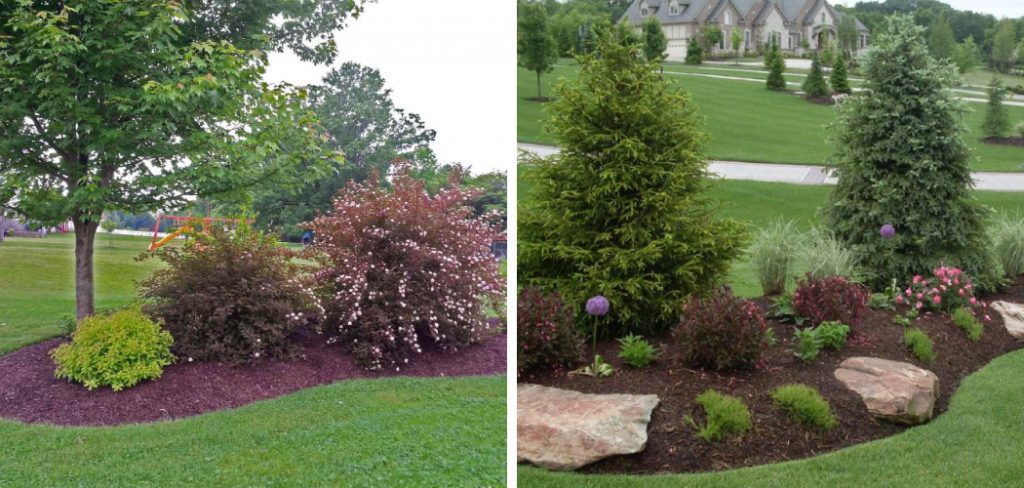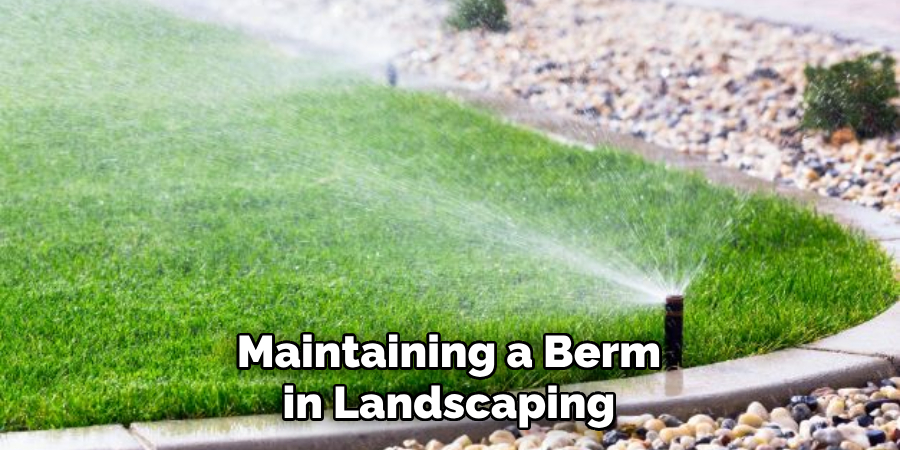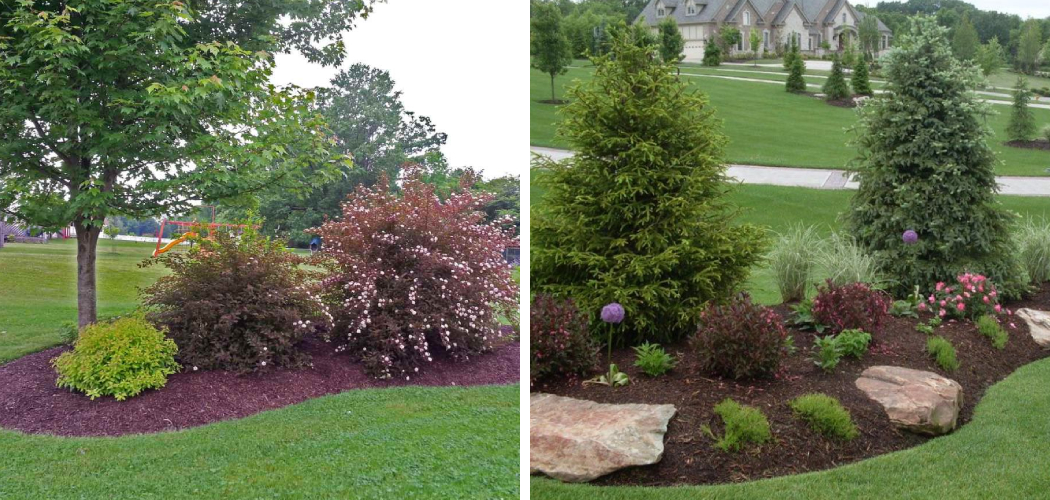To build a berm for landscaping, start by deciding on the location and purpose of the berm. Remove the topsoil, shape the berm, and compact the soil, then cover with a layer of topsoil and plant suitable vegetation to prevent erosion and enhance the aesthetics of the landscape.
Berm construction is an effective method for adding dimension to flat or sloping areas and can create visual interest while also serving as a barrier or sound buffer. By following these steps, you can successfully create a berm that complements your landscape design and provides functional benefits.

How to Build a Berm for Landscaping: 6 Easy Steps
Planning Your Berm
Planning your berm requires careful consideration of the location, size, and purpose. First, select a suitable spot for your berm. Next, determine the size based on the available space and design preferences. Lastly, think about the purpose the berm will serve, whether it’s to add visual interest, create privacy, or control water drainage.
By following these steps, you can create a well-planned berm that enhances your landscaping. Remember, the location, size, and purpose are crucial factors in building a successful berm. Happy landscaping!
Preparing The Site
To build a berm for landscaping, start by marking the boundary of the site. Clear vegetation and level the ground accordingly.
Building The Berm
Building a berm for landscaping involves creating a solid base layer. Start by shaping the berm according to your desired design. Use a combination of soil and compact it firmly to form the base layer. Make sure to build up the layers gradually, adding soil and compacting it as you go.
Consider using a variety of plants to add texture and interest to the berm. Remember to choose suitable plants for the specific conditions of your landscape. Incorporate rocks or other decorative elements to enhance the visual appeal of the berm.
Regular maintenance such as watering, weeding, and occasional trimming will help your berm thrive and maintain its shape. By following these steps, you can successfully build a berm that adds beauty and functionality to your landscape.
Planting And Mulching
When selecting plants for your berm, make sure to choose those suitable for your specific climate and soil conditions. Creating planting beds on your berm will provide a stable foundation for the plants and help prevent erosion. Ensure that the area is properly prepared by removing any existing vegetation and loosening the soil.
Once the planting beds are ready, carefully place the selected plants, keeping in mind their growth habits and spacing requirements. After planting, apply a layer of mulch around the base of the plants to provide moisture retention, weed suppression, and temperature regulation.
Mulch also adds aesthetic appeal to your berm and helps improve soil fertility over time. Remember to use organic mulch materials, such as wood chips or bark, for best results. Following these steps will help you build a beautiful and functional berm for your landscaping needs.
Watering And Irrigation
Watering and irrigation are essential for maintaining a berm in landscaping. An established watering schedule ensures that plants receive adequate moisture. Installing a drip irrigation system is an effective way to deliver water directly to plant roots. This method conserves water and prevents wastage.

Monitoring soil moisture levels regularly is crucial to adjust the watering frequency accordingly. By regularly checking the moisture content, you can prevent overwatering or drought stress. Maintaining a balance between wet and dry conditions is key to the health and longevity of your berm.
So, make sure to establish a watering schedule and consider installing a drip irrigation system for efficient and effective irrigation. Keep a close eye on soil moisture to ensure optimal growth and a thriving landscape.
Maintaining The Berm
Maintaining your berm is crucial for its long-term success. Proper watering and fertilizing are essential for its health. Ensure the berm receives adequate water and nutrients to thrive. Regular inspections will help catch any issues early on. Conduct visual checks for weed growth and promptly address them.
Inspect the berm’s overall condition, looking for signs of erosion or damage. Regular maintenance will keep your berm looking pristine and prevent any potential problems. By following these guidelines, you can enjoy a beautiful and well-maintained landscaping berm that enhances your outdoor space.
Frequently Asked Questions Of How To Build A Berm For Landscaping
How Do I Build A Berm For Landscaping?
To build a berm for landscaping, start by clearing the area and marking the desired shape. Then, excavate the soil, creating a mound. Next, layer organic material to improve drainage and add topsoil. Finally, plant desired vegetation and mulch the berm to retain moisture.
What Are The Benefits Of Building A Berm For Landscaping?
Building a berm for landscaping can provide several benefits. It adds visual interest and texture to your landscape, helps control water runoff and erosion, creates natural focal points, and offers a great way to enhance the overall aesthetics of your yard.
What Are Some Suitable Plants For A Landscaping Berm?
There are various plants that thrive on landscaping berms. Consider evergreens like juniper or yew for year-round interest. Ornamental grasses such as switchgrass or feather reed grass add movement. Colorful perennials like coneflowers or daylilies can bring bursts of color.
Ensure the selected plants are well-suited to your climate and soil conditions.
How Tall Should A Landscaping Berm Be?
The ideal height of a landscaping berm depends on its purpose and the surrounding landscape. Generally, berms range from 1 to 3 feet tall. Keep in mind that the berm’s height should gradually slope to create a natural look. Consider the scale of your yard and the plants you plan to incorporate.
Can I Build A Berm In My Backyard Without Professional Help?
Yes, you can build a berm in your backyard without professional help. However, it’s important to research proper techniques and materials, consider drainage and soil conditions, and accurately measure and shape the berm. Following step-by-step guides and seeking advice from experienced gardeners can help ensure a successful diy project.
How Do I Maintain A Landscaping Berm?
To maintain a landscaping berm, regularly weed the area to prevent unwanted plants from taking over. Monitor moisture levels and water as needed, ensuring the berm doesn’t become overly saturated. Prune or trim plants as necessary to maintain their shape and health.
Mulching annually can help retain soil moisture and control weeds.
Conclusion
Incorporating a berm into your landscaping can transform your outdoor space into a visually appealing and functional area. By following the simple steps outlined in this blog post, you can create a berm that not only enhances the natural contours of your yard but also helps with soil erosion and provides a focal point for your landscape design.
Remember to consider the location, size, and shape of your berm, taking into account the overall aesthetics and purpose you want it to serve. Pay attention to the proper soil composition and choose suitable plants that will thrive on the berm.
With careful planning and execution, you can create a berm that adds depth and dimension to your garden while also being a sustainable and environmentally friendly addition. Start your berm-building journey today and watch your landscape come to life with this innovative feature.

